News
Design Magazine AXIS Renewal ! Vol.229 on Sale July 1
24.06.28
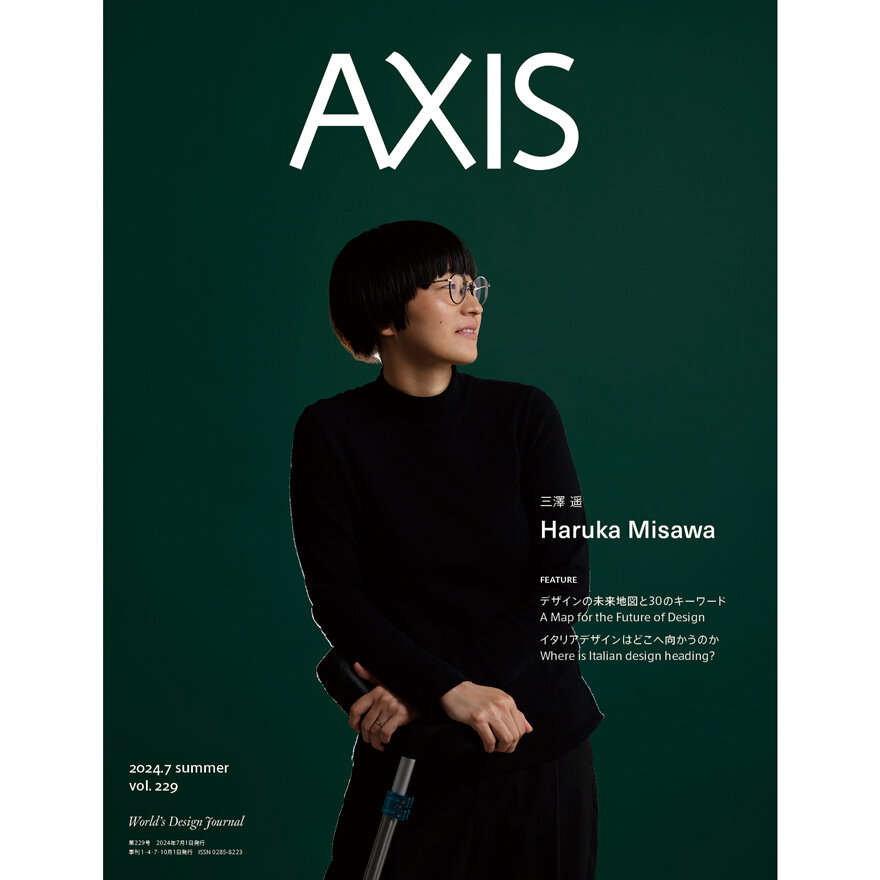
COVER STORY
Haruka Misawa
Designer
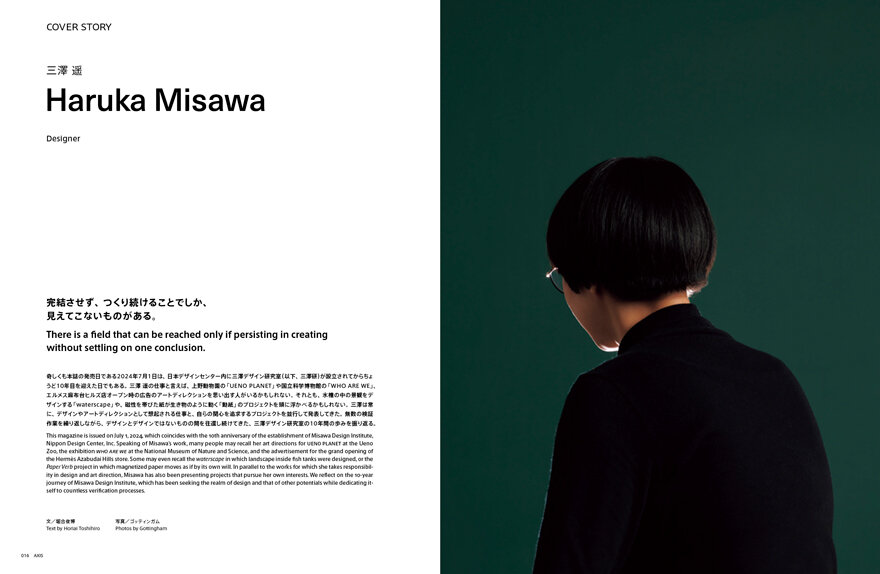
This magazine is issued on July 1, 2024, which coincides with the 10th anniversary of the establishment of Misawa Design Institute, Nippon Design Center, Inc. Speaking of Misawa's work, many people may recall her art directions for UENO PLANET at the Ueno Zoo, the exhibition WHO ARE WE at the National Museum of Nature and Science, and the advertisement for the grand opening of the Hermès Azabudai Hills store. Some may even recall the waterscape in which landscape inside fish tanks were designed, or the Paper Verb project in which magnetized paper moves as if by its own will. In parallel to the works for which she takes responsibility in design and art direction, Misawa has also been presenting projects that pursue her own interests. We reflect on the 10-year journey of Misawa Design Institute, which has been seeking the realm of design and that of other potentials while dedicating itself to countless verification processes.
Feature
A Map for the Future of Design and 30 Keywords
As the rush of the pandemic subsides, we have arrived at a moment to pause and look toward the next decade. We may need to review, reevaluate, and reinterpret our current institutions and assumptions for new purposes and meaning. We might return to important topics that got overlooked in the last few years. These mechanisms of review and reevaluation will naturally extend into all areas of society, including technology, business, entertainment, and the arts. Design is no exception. We asked nine design leaders about their vision for the next ten years, and they gave us some important keywords for mapping the future of design.
Understanding the "universality of humans" by looking ahead to a society transformed by technology
Kinya Tagawa
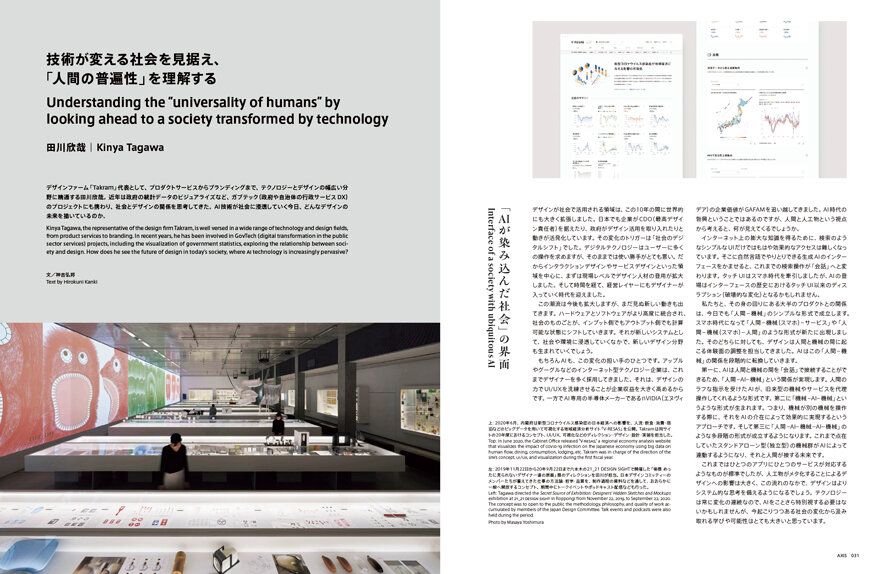
Kinya Tagawa, the representative of the design firm Takram, is well versed in a wide range of technology and design fields, from product services to branding. In recent years, he has been involved in GovTech (digital transformation in the public sector services) projects, including the visualization of government statistics, exploring the relationship between society and design. How does he see the future of design in today's society, where AI technology is increasingly pervasive?
Preserving the Principles of Design
Jasper Morrison
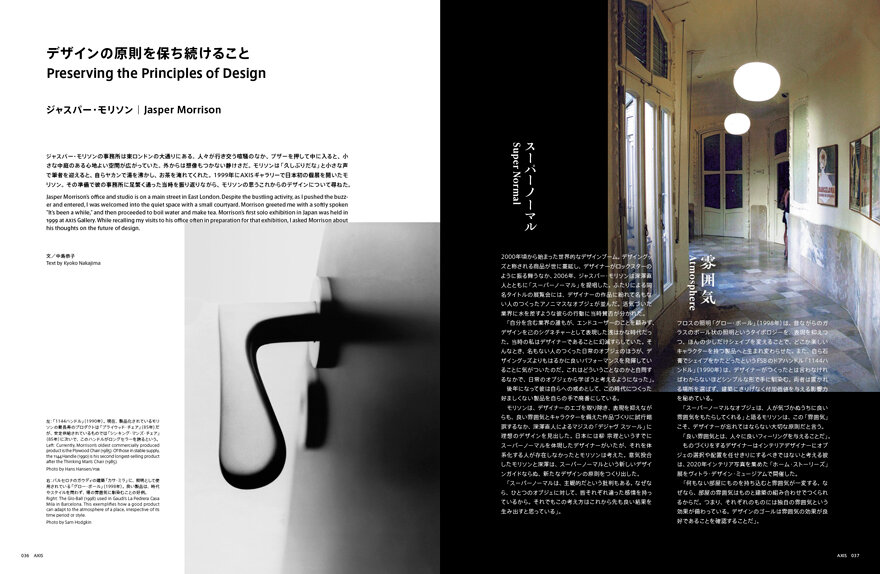
Jasper Morrison's office and studio is on a main street in East London. Despite the bustling activity, as I pushed the buzzer and entered, I was welcomed into the quiet space with a small courtyard. Morrison greeted me with a softly spoken "It's been a while," and then proceeded to boil water and make tea. Morrison's first solo exhibition in Japan was held in 1999 at AXIS Gallery. While recalling my visits to his office often in preparation for that exhibition, I asked Morrison about his thoughts on the future of design.
Focusing on contentment 100 years from now
Kenya Hara
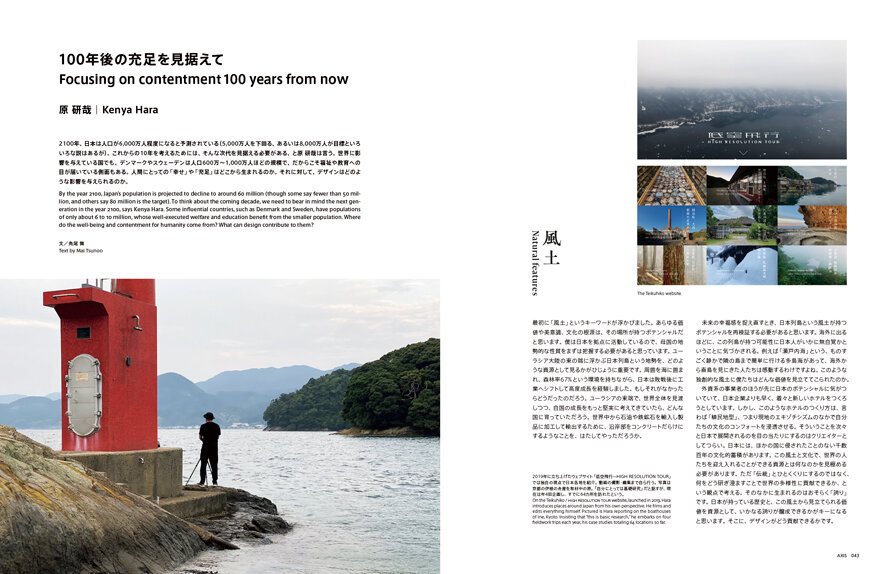
By the year 2100, Japan's population is projected to decline to around 60 million (though some say fewer than 50 million, and others say 80 million is the target). To think about the coming decade, we need to bear in mind the next generation in the year 2100, says Kenya Hara. Some influential countries, such as Denmark and Sweden, have populations of only about 6 to 10 million, whose well-executed welfare and education benefit from the smaller population. Where do the well-being and contentment for humanity come from? What can design contribute to them?
Being conscious of the consequences with an integrated view
Ikko Yokoyama
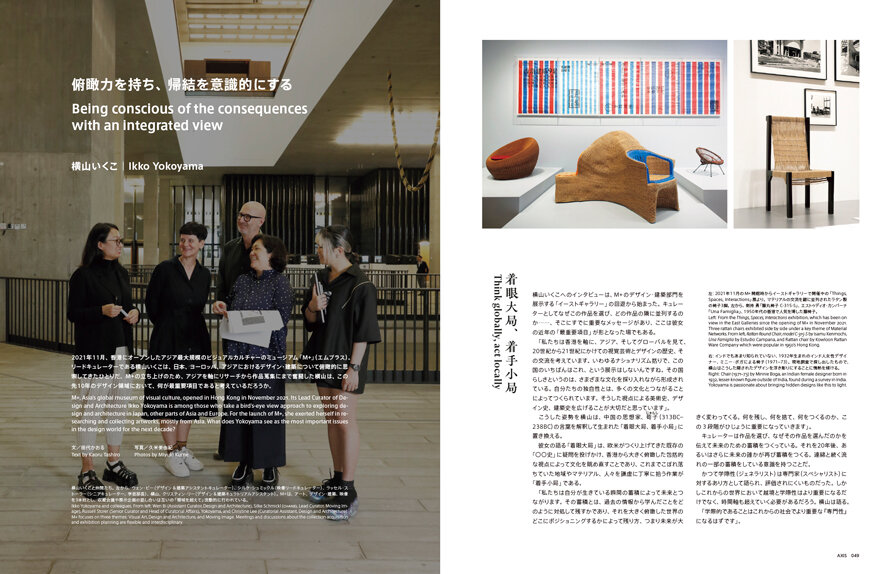
M+, Asia's global museum of visual culture, opened in Hong Kong in November 2021. Its Lead Curator of Design and Architecture Ikko Yokoyama is among those who take a bird's-eye view approach to exploring design and architecture in Japan, other parts of Asia and Europe. For the launch of M+, she exerted herself in researching and collecting artworks, mostly from Asia. What does Yokoyama see as the most important issues in the design world for the next decade?
Cooking with an aesthetic sense in the post human-centric era
Shunji Yamanaka
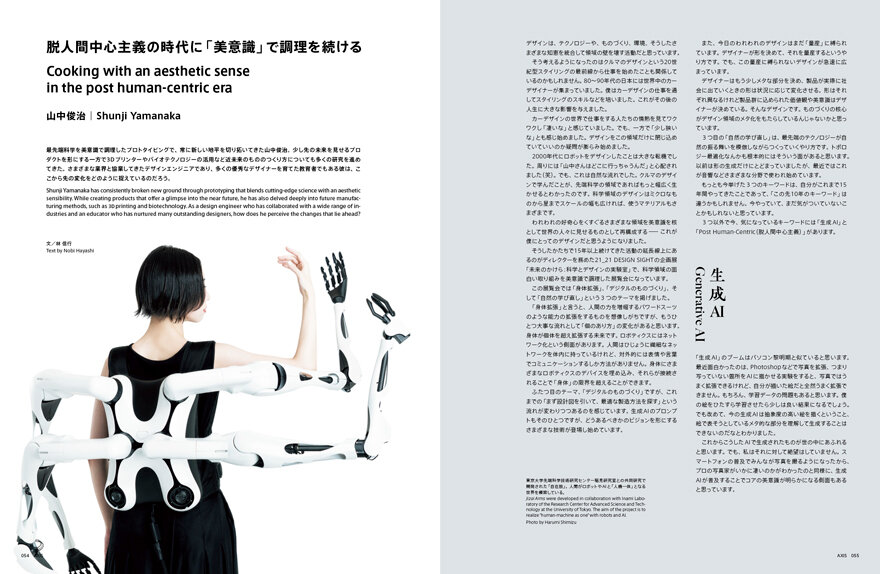
Shunji Yamanaka has consistently broken new ground through prototyping that blends cutting-edge science with an aesthetic sensibility. While creating products that offer a glimpse into the near future, he has also delved deeply into future manufacturing methods, such as 3D printing and biotechnology. As a design engineer who has collaborated with a wide range of industries and an educator who has nurtured many outstanding designers, how does he perceive the changes that lie ahead?
Design as embodiment
Naoto Fukasawa
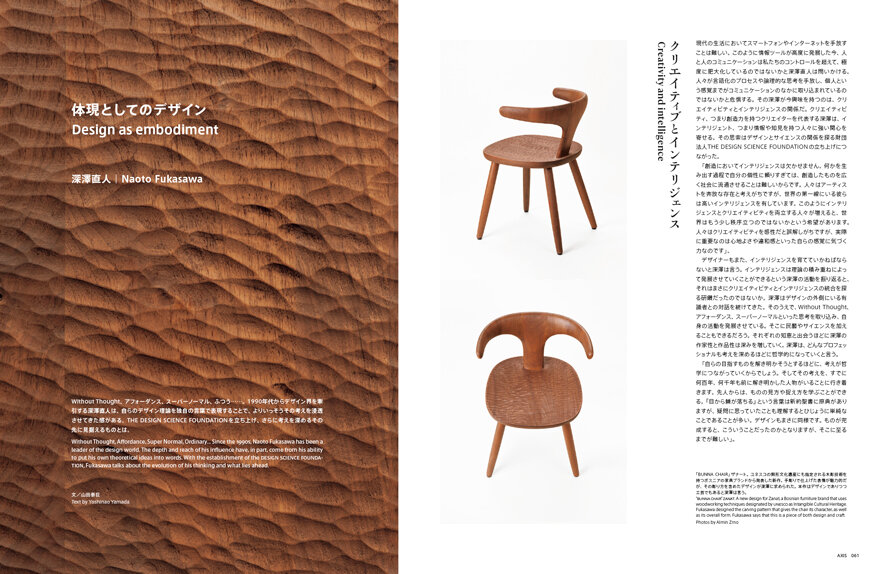
Without Thought, Affordance, Super Normal, Ordinary... Since the 1990s, Naoto Fukasawa has been a leader of the design world. The depth and reach of his influence have, in part, come from his ability to put his own theoretical ideas into words. With the establishment of the DESIGN SCIENCE FOUNDATION, Fukasawa talks about the evolution of his thinking and what lies ahead.
Isolated originality or cross-disciplinary collaboration? What design education of the future needs
Julia Cassim
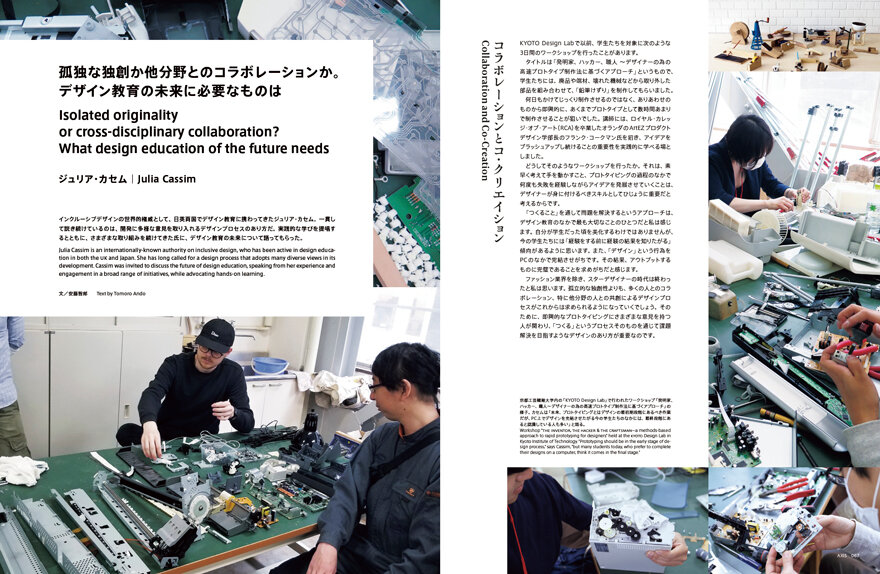
Julia Cassim is an internationally-known authority on inclusive design, who has been active in design education in both the UK and Japan. She has long called for a design process that adopts many diverse views in its development. Cassim was invited to discuss the future of design education, speaking from her experience and engagement in a broad range of initiatives, while advocating hands-on learning.
Design in an Incomprehensible World
Satoshi Yoshiizumi
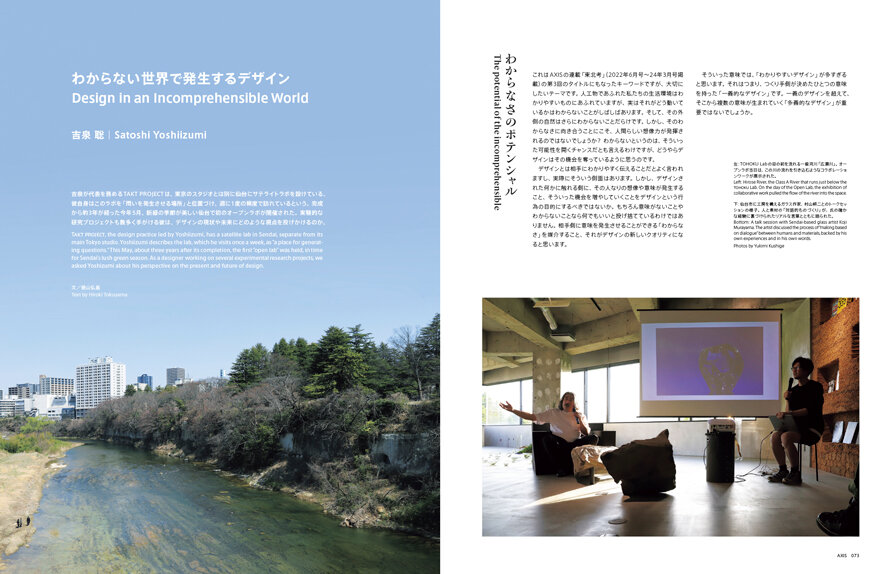
TAKT PROJECT, the design practice led by Yoshiizumi, has a satellite lab in Sendai, separate from its main Tokyo studio. Yoshiizumi describes the lab, which he visits once a week, as "a place for generating questions." This May, about three years after its completion, the first "open lab" was held, in time for Sendai's lush green season. As a designer working on several experimental research projects, we asked Yoshizumi about his perspective on the present and future of design.
A dynamic shift from the notion of modern design
Kazufumi Nagai
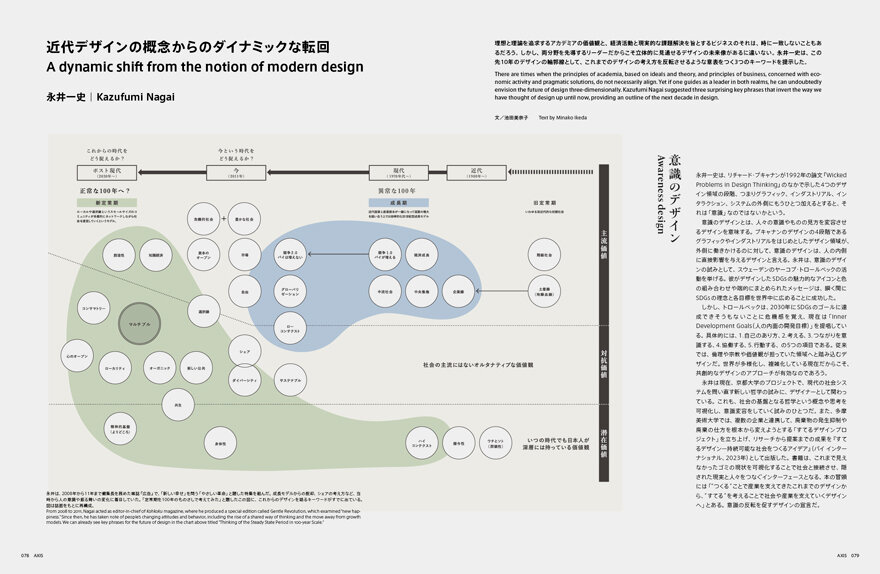
There are times when the principles of academia, based on ideals and theory, and principles of business, concerned with economic activity and pragmatic solutions, do not necessarily align. Yet if one guides as a leader in both realms, he can undoubtedly envision the future of design three-dimensionally. Kazufumi Nagai suggested three surprising key phrases that invert the way we have thought of design up until now, providing an outline of the next decade in design.
Feature 2
Where is Italian design heading?
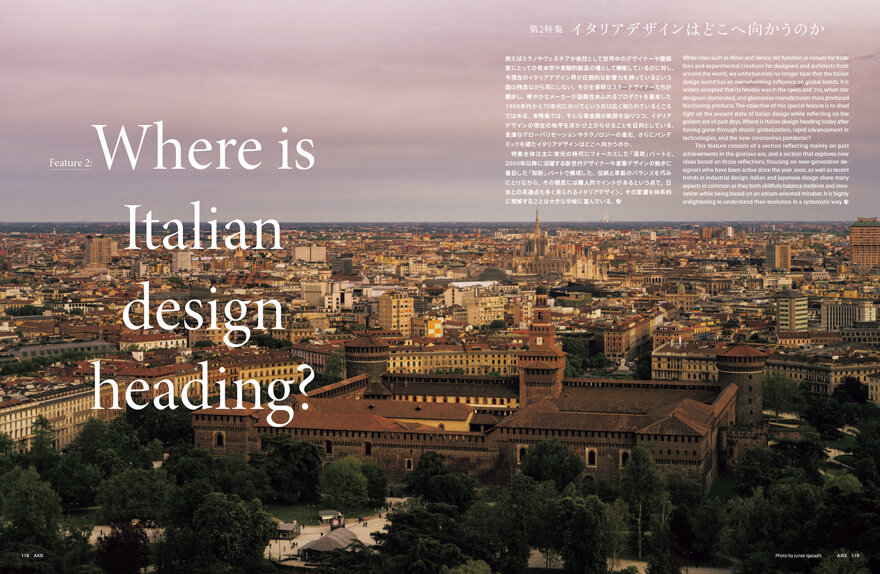
While cities such as Milan and Venice still function as venues for trade fairs and experimental creations for designers and architects from around the world, we unfortunately no longer hear that the Italian design world has an overwhelming influence on global trends. It is widely accepted that its heyday was in the 1960s and '70s, when star designers dominated, and glamorous manufacturers mass produced fascinating products. The objective of this special feature is to shed light on the present state of Italian design while reflecting on the golden era of past days. Where is Italian design heading today after having gone through drastic globalization, rapid advancement in technologies, and the new coronavirus pandemic? This feature consists of a section reflecting mainly on past achievements in the glorious era, and a section that explores new ideas based on those reflections, focusing on new-generation designers who have been active since the year 2000, as well as recent trends in industrial design. Italian and Japanese design share many aspects in common as they both skillfully balance tradition and innovation while being based on an artisan-oriented mindset. It is highly enlightening to understand their evolution in a systematic way.
SERIES
Ambience
Mikiya Takimoto
LEADERS
Takashi Yamazaki (Film director)
Global Creators Labs
Refik Anadol Studio AI and Architecture
AFRICAN PRACTITIONERS
Bubu Ogisi (Fibre Artist, Creative Director of IAMISIGO)
EYES ON K-DESIGN
Branding strategy for Seoul, the design capital of Korea that centers around DDP
Sci-Tech File
What is a gall? Unraveling the mystery of its diverse and strange forms created by insect x plant
From a single piece
Kleenex Tissue Paper (1964)
DESIGN FOR DECISION-MAKING
Why is design decision needed now?
TIMELESS INGENUITY
Prehistoric Graffiti
Exercises in Poetic Engineering
To take apart is an expedition
Viewpoint Monologue
Uselessness
Creators Navi
Karen ann Donnachie & Andy Simionato, Toshiki Koike, Studio Ololoo, Laila Cassim, Shohei Yokoyama
To perceive the actuality
Where did the strokes come from?
Design Magazine AXIS Back number
For purchase